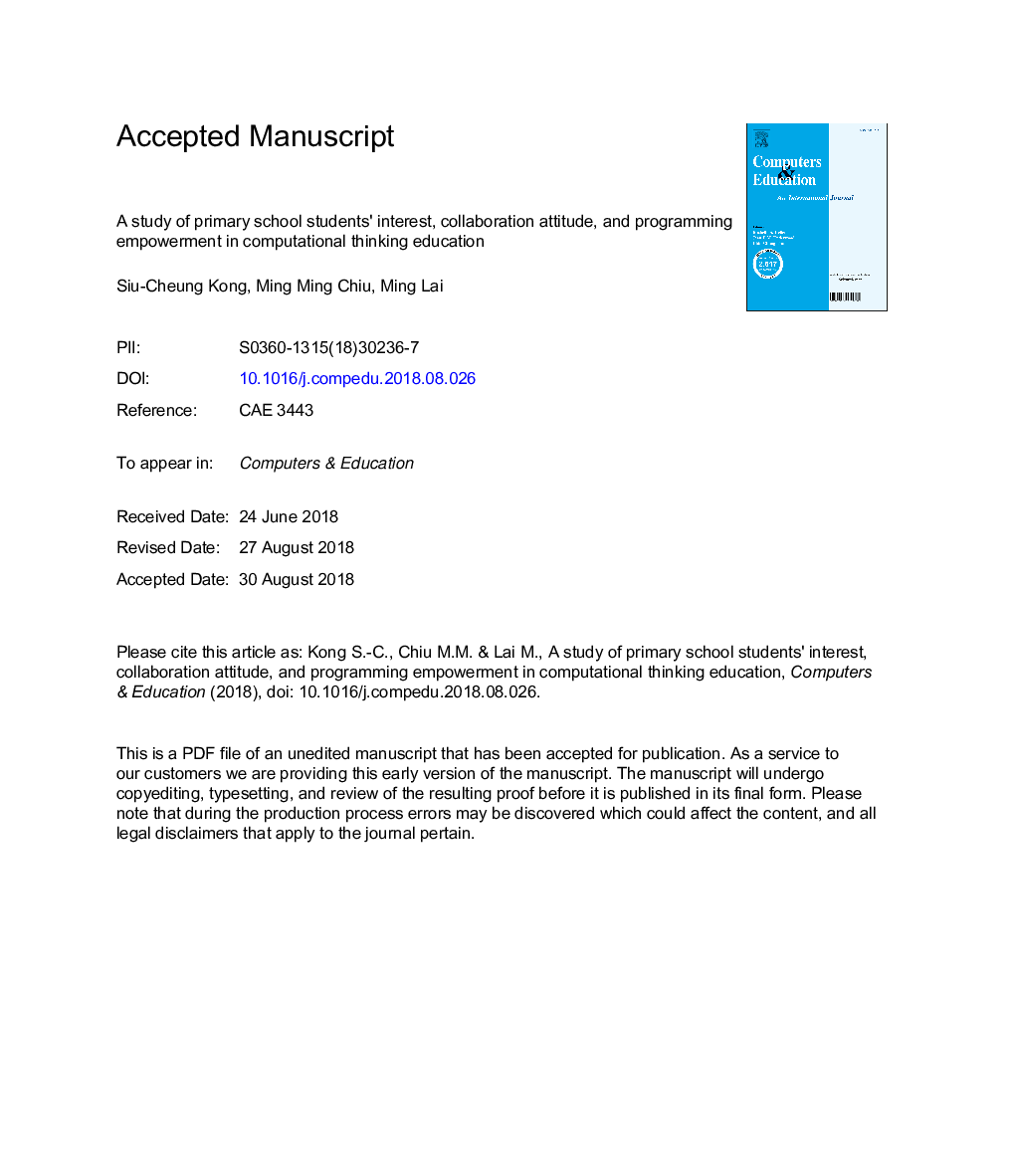| Article ID | Journal | Published Year | Pages | File Type |
|---|---|---|---|---|
| 10127013 | Computers & Education | 2018 | 29 Pages |
Abstract
Building on Seymour Papert's view of empowering students by mastering programming, this study conceptualized programming empowerment as consisting of four components: meaningfulness, impact, creative self-efficacy, and programming self-efficacy. A sample of 287 primary school students in grades four to six completed a corresponding survey. Confirmatory factor analysis validated the proposed components of the programming empowerment instrument. A structural equation model indicated that students with greater interest in programming perceived it as more meaningful, had greater impact, had greater creative self-efficacy, and had greater programming self-efficacy. Also, students with attitudes toward collaboration that were more positive than others had greater creative self-efficacy. Boys showed more interest in programming than girls did. Students in higher grade levels than others viewed programming as less meaningful and had lower programming self-efficacy. These results support future studies that evaluate the impacts of interest-driven computational thinking and programming curricula with ample collaboration opportunities.
Keywords
Related Topics
Social Sciences and Humanities
Social Sciences
Education
Authors
Siu-Cheung Kong, Ming Ming Chiu, Ming Lai,
